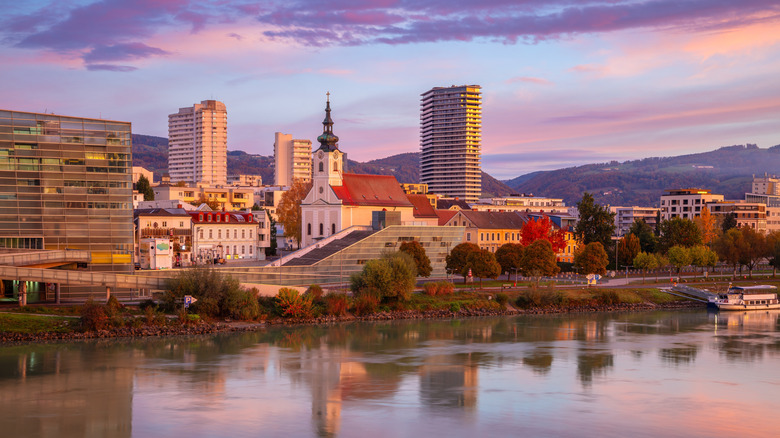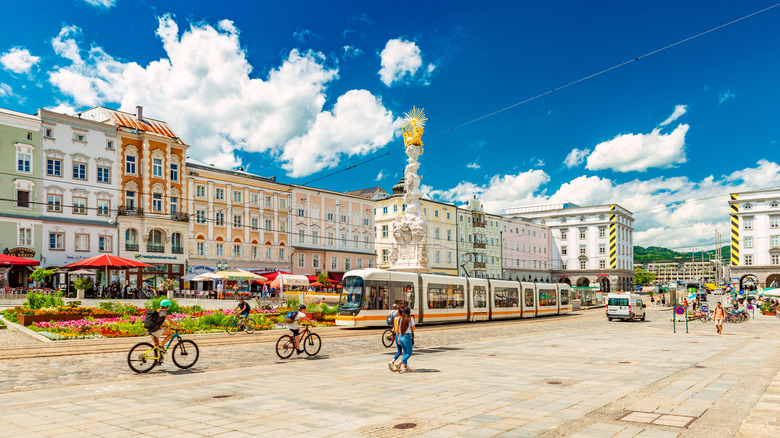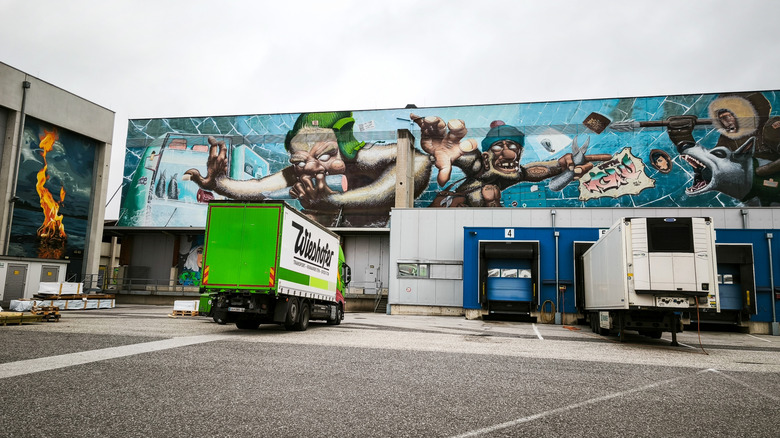Europe's Underrated 'City Of The Future' Has An Energetic, Innovative Cultural Scene Waiting To Be Discovered
While we often associate European cities with Baroque or medieval foundations punctuated by castles, cathedrals, and ancient cobbled streets, many are at the forefront of the modern world. The combination of preserved history and continuous advancement makes gorgeous countries like Estonia, one of the most digitally advanced, especially worth visiting. Another example is the famously pretty city of Amsterdam, where the new media Nxt Museum is dedicated to the future of art. In Austria, visitors can get a prime feel for this incredible blend of history and innovation in Linz — once the center of an empire in the Middle Ages — and now branded as the "city of the future" by Austria Tourism.
Cupped in a bend of the Danube River, Linz has seen continuous human settlement since the Neolithic age. It was once a Roman fort and later served as a marketplace and provincial capital under the Austrian dukes — a history still present in the town squares and remnants of its medieval castle. In the 19th century, industrialization transformed Linz, filling it with railroads, factories, and shipyards. Some of these industrial buildings have been repurposed for cultural use, like the Tabakfabrik, a tobacco factory turned into a complex of shops, dining, and exhibition spaces. Across the city, you'll find more gems like this, positioning Linz as a city of reinvention and creativity.
Start at Linz's main square, flanked by Baroque architecture and modern museums
Linz's massive main square, the Hauptplatz, is the lively city center, lined with pastel-colored buildings and cafés. In the middle of the square is the white marble Trinity Column, erected in 1723. Among the eye-catching facades surrounding the square are several buildings of note. Just next to the column, with peach-colored stripes, is the Old Town Hall. Built in the 1670s, it's still home to the mayor's office and city council. The site has played a role in the city's governance since the 15th century, when the city served as a capital of the Holy German Roman Empire. Inside, the lobby floor features a sprawling, walkable map of Linz, and tourist information is also available.
Step back out to the square's southern end, and you'll find the Alter Dom (Old Cathedral). The Baroque-style cathedral, constructed in the 17th century, boasts a gorgeous altar and a historic organ once played by composer Anton Bruckner, who resided in Linz. While the city takes pride in being recognized as a UNESCO City of Media Arts, it's also deeply rooted in classical music, especially through Bruckner. The city's main concert hall, the Brucknerhaus, is named after him.
Two unique museums are close to the main square. The Lentos Art Museum is a five-minute walk away — a sleek, glass-fronted building right on the Danube. It houses everything from paintings by Gustav Klimt and Egon Schiele to modern object art. Cross the bridge over the river and you'll reach the Ars Electronica Center, a museum dedicated to experimental technology. Its exhibitions range from the Deep Space 8K virtual reality theater to AI-powered cars.
Walk along the Danube to Linz's artsy industrial harbor
A good place to stop for lunch is Linz's Tabakfabrik. Aside from being a cultural center, it's home to several restaurants and cafés. One is the Kreisler*in, a café that doubles as a vintage shop. Be sure to try something from its pastry case — the Linzer Torte, a crumbly cake with red currant jam, is a local specialty and one of the oldest cake recipes in the world. From the Tabakfabrik, you can walk north and reach the Danube riverside promenade (the Donaulände), which is lined with sculptures, in about 10 minutes.
Continue walking north along the river, passing working docks and warehouses, and keep an eye out for street art as you approach the harbor zone. The area is called Mural Harbor, an artistic oasis surrounded by cranes, warehouses, and shipping containers. There are over 300 murals here, painted on old construction sites and industrial debris. Visitors can book a guided walking tour or opt for a unique boat tour experience. Just five minutes from the harbor is the Posthof, a huge contemporary culture venue where you can catch a live performance or just stop by for a drink or dinner at its adjoining restaurant and bar, Posthof Beisl.
The closest international airport to Linz is the Vienna International Airport, about a two-hour train ride away. You can conveniently take one train from Vienna Central Station to Linz's main station, making Linz an easy and worthwhile day trip from Vienna.


